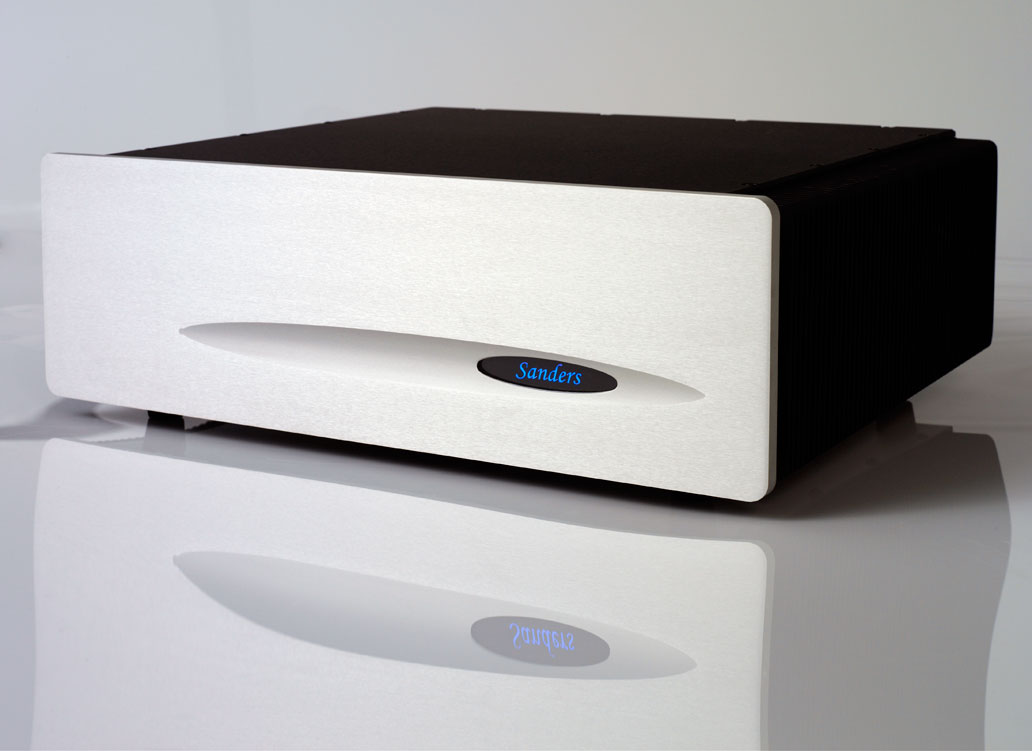
This amplifier will deliver more than 2000 volt-amps per channel into an ESL, and when driving magnetic speakers, the ESL amplifier will deliver over 400 watts/channel into an 8 ohm load and 780 watts into a 4 ohm load.
The ESL amp originally was designed in 1998 by popular demand in response to electrostatic speaker owners’ request for an amplifier that could drive this type of speaker well. Since the most common type of speakers are the magnetic speaker types, most amplifier manufacturers do not design their amplifiers for electrostatic speakers. As a result, most have problems driving these difficult speakers.
In essence, the ESL amp solves this problem by using such a massive output stage (20 large output transistors, which are able to deliver 7,000 watts) that the transistors are never stressed by the demanding load of an electrostatic speaker and therefore protective circuitry is not required or used. Additionally, the amplifier can safely drive an 1/3 ohm load, which is often seen in ESLs at supersonic frequencies.
Since it is protective circuitry that causes the harshness and stridency usually heard in transistor amplifiers, eliminating it is the key to producing superb sound quality. The result is a solid state amplifier that sounds as smooth and rich as tube amplifiers, but without the impedance and voltage problems that tubes have when driving ESLs.
Additional features of the ESL amp is that it has been designed to be compact enough to be placed on a shelf and it is very efficient so that it runs just slightly warm. This high efficiency eliminates the waste of massive amounts of electricity like most amplifiers. It does not heat your room, so does not require additional waste in the form of extra air conditioning.
The new features that produce the Mk II version of the ESL amp is the use of a new, higher voltage, more powerful power supply transformer and the use of Thermal Trak transistors. The new toroidal transformer is potted in epoxy and covered with a metal shield so that there is no stray magnetic fields to cause hum. The additional power and voltage increases the power to over 400 watts/channel into an 8 ohm load and to 780 watts into a 4 ohm load.
This has special significance when driving ESLs, which are actually driven by voltage, not current as is the case with magnetic speakers. The ESL amp Mk II can drive 64 volts (RMS) into an ESL. This will play them at very loud levels and makes it possible to reproduce dynamic music at live levels with ESLs that are capable of such performance.
The bias levels in conventional solid state amplifiers are highly unstable. This is due to the fact that the bias is highly variable depending on the temperature in the output transistor junctions. The junctions are very small, so sudden large changes in the electrical current passing through them will cause an instantaneous and dramatic increase in the bias.
Well designed, conventional amplifiers try to deal with this by sensing the temperature of the heat sinks upon which the transistors are mounted. But it takes several minutes for the heat in the transistor junction to soak into a massive heat sink and change its temperature.
As a result, monitoring the heat sink temperatures can only control the average bias over time, not the instantaneous junction temperatures. Therefore it is common for the bias in a conventional amplifier to vary by several hundred percent despite heat sink temperature monitoring.
Since transistor junction heat causes an increase in the bias current, and bias current causes an increase in the junction temperature, “thermal runaway” can occur and the transistor will fail due to excessive temperature. Protective circuitry usually is necessary to prevent this.
But the recent development of “Thermal Trak” transistors solves all these problems. Thermal Trak transistors have a microscopic temperature sensor built right into the junction of the transistor. It is therefore possible to monitor the temperature of the transistor junction in real time and use that information to adjust the amplifier’s bias instantly to maintain an absolutely stable bias current under all conditions. This assures that the bias will always be at an optimum level with no chance of thermal runaway.
The result of using Thermal Trak transistors means that the Mk II ESL amplifier’s bias can be optimized for extremely low distortion levels with minimum heat production. It also means that the warm-up time for the amplifier (where the bias is optimal) is only a few of minutes instead of several hours.
